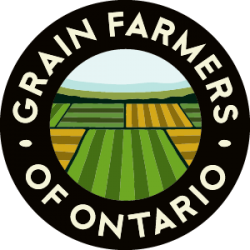Red clover non-uniformity: field assessment of drought tolerant red clover, delayed seeding strategies and spatial nitrogen application
Principal Investigator
Ralph C. Martin
Research Institution
University of Guelph
External Funding Partners
OMAFRA/U of Guelph partnership
Project Start
April 2012
Project End
March 2015
Objectives
- Assess whether red clover stand variation observed in Ontario is predominantly due to drought related factors or to other factors.
- Determine if there is genetic variation for drought tolerance within red clover that can be exploited to improve uniformity of persistence under field conditions.
- Assess whether over seeding red clover after wheat anthesis will improve red clover stand uniformity.
- Test existing technology for image acquisition of non-uniform stands and nitrogen application equipment to apply nitrogen in proper amounts to specific areas, with and without clover.
Impact
- The incorporation of red clover into corn/soybean/wheat rotations may lead to positive soil benefits such as increased soil organic matter and a nitrogen credit.
- The use of variable N applications and image acquisition methods to assess red clover non-uniformity may reduce nitrous oxide (N2O) emissions in corn when non-uniform red clover stands have a uniform application N application in corn.
Scientific Summary
The benefits of uniform stands of red clover in a rotation are well established. Nitrogen fertilizer reductions, crop yield increases of crops immediately following red clover and also subsequent crops in the rotation, soil quality improvements and soil carbon increases have been well documented. There has been resurgence in the use of red clover. Although red clover overseeded to winter wheat has increased, there is an ongoing problem of non-uniformity of red clover stands. When farmers are confronted with non-uniform stands, they may respond by applying nitrogen without any consideration of red clover nitrogen contributions. This is a serious environmental concern, because it results in high nitrogen, high carbon zones in the field where red clover did establish, thus leading to increased risk of nitrous oxide (N2O) emissions. Previous research has identified a number of factors that contribute to non-uniformity and strategies to improve probability of uniformity; however, drought related factors, which cannot be managed, were suggested as primary causes of non-uniformity.
This project investigated the role of water stress as a contributing factor to non-uniformity in red clover and evaluated a system to reduce the risk of N2O emissions in corn. Lower than average precipitation in the red clover growing season negatively affects average red clover biomass and stand densities, and it increases the degree of non-uniformity in red clover biomass and stand densities. At locations with the most uniform stands of red clover, variation in red clover biomass was linked more to variation in moisture than to variation in stand densities. We evaluated several machine learning classifiers for generating full-field red clover maps given an aerial mosaic image and sparse ground truth data. The system distinguished between red clover ground cover and ground cover of volunteer winter wheat, oil seed radish and bare soil. The accurate and robust system represents a tool that could be used by commercial producers for variable rate applications of nitrogen to corn following non-uniform stands of red clover to reduce the risk of N2O emissions.

